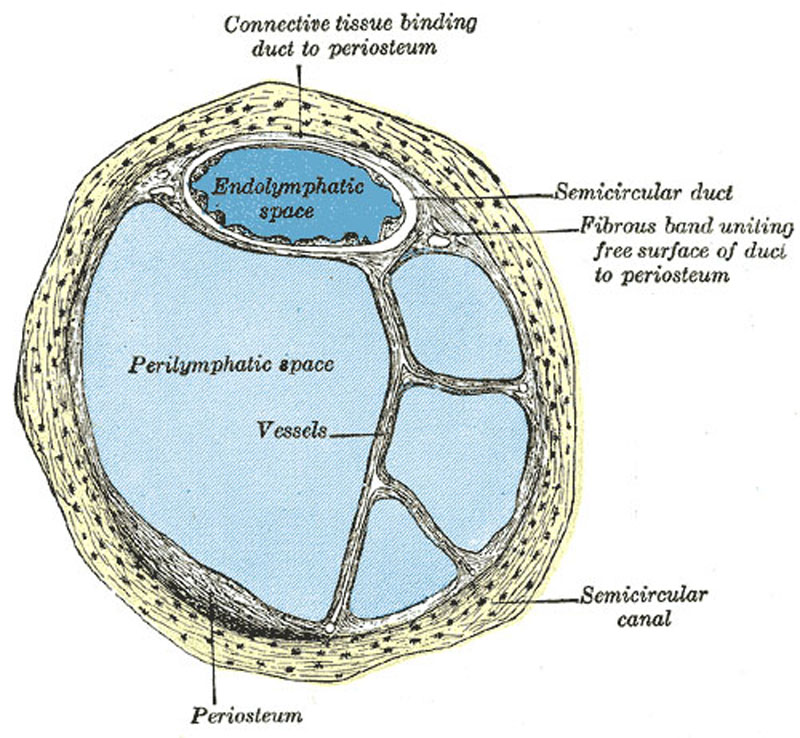Equilibrium
- The vestibular system is the sensory system that provides the leading contribution about the sense of balance and spatial orientation for the purpose of coordinating movement with balance.
- The vestibule is the central part of the osseous labyrinth, and is situated medial to the tympanic cavity, behind the cochlea, and in front of the semicircular canals.
- An otolith is a structure in the saccule or utricle of the inner ear, specifically in the vestibular labyrinth of vertebrates, that allow sensitivity to changes in horizontal movement and vertical acceleration.
- The utricle, along with the saccule, is one of the two otolith organs located in the vertebrate inner ear.
- The saccule is a bed of sensory cells situated in the inner ear which translates head movements into neural impulses which the brain can interpret, detecting linear accelerations and head tilts in the vertical plane.
- A semicircular canal is one of three interconnected tubes located inside each ear. Oriented along the pitch, roll, and yaw axes, they provide sensory input for experiences of rotary movements.

